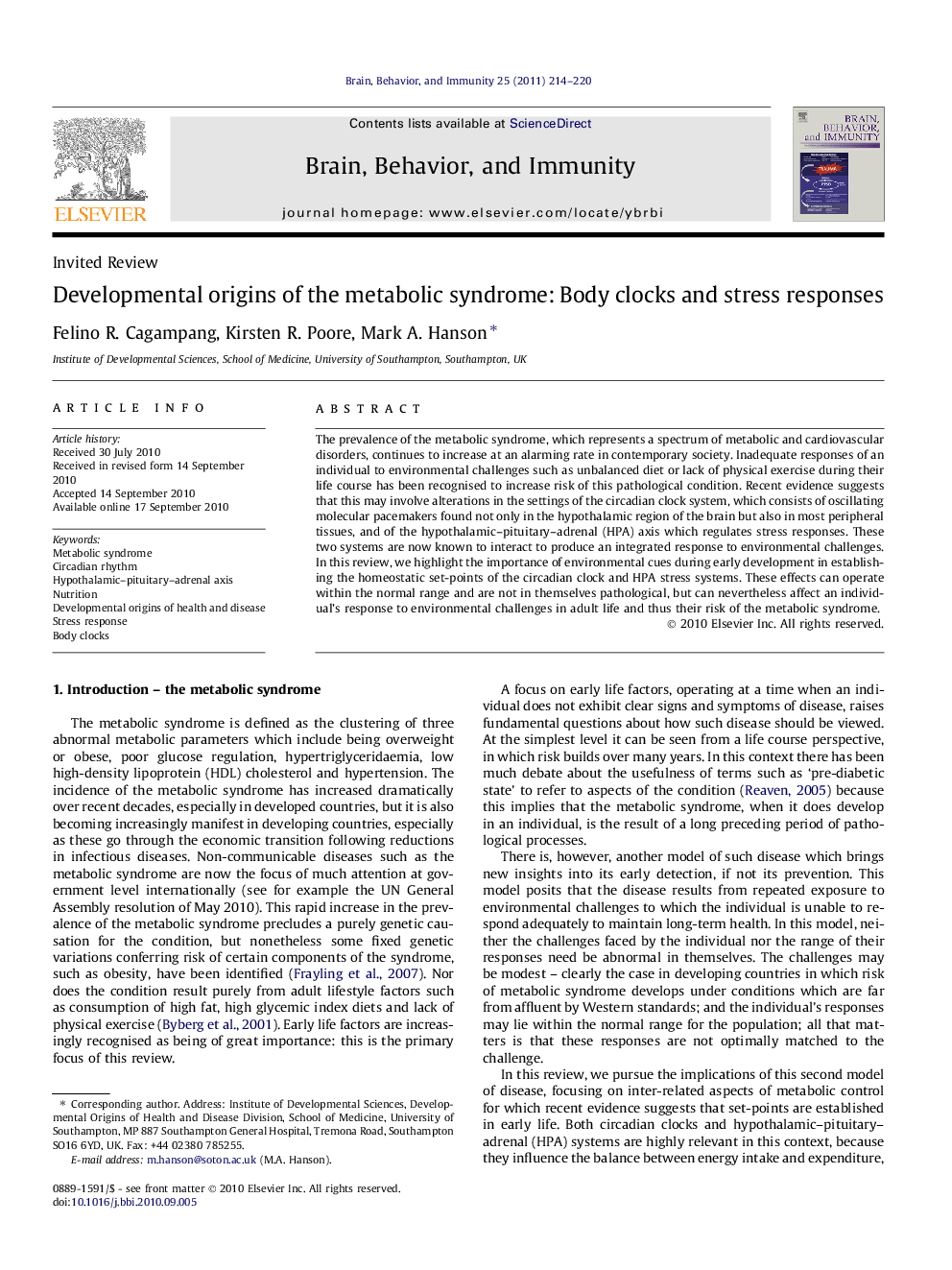| Article ID | Journal | Published Year | Pages | File Type |
|---|---|---|---|---|
| 922656 | Brain, Behavior, and Immunity | 2011 | 7 Pages |
The prevalence of the metabolic syndrome, which represents a spectrum of metabolic and cardiovascular disorders, continues to increase at an alarming rate in contemporary society. Inadequate responses of an individual to environmental challenges such as unbalanced diet or lack of physical exercise during their life course has been recognised to increase risk of this pathological condition. Recent evidence suggests that this may involve alterations in the settings of the circadian clock system, which consists of oscillating molecular pacemakers found not only in the hypothalamic region of the brain but also in most peripheral tissues, and of the hypothalamic–pituitary–adrenal (HPA) axis which regulates stress responses. These two systems are now known to interact to produce an integrated response to environmental challenges. In this review, we highlight the importance of environmental cues during early development in establishing the homeostatic set-points of the circadian clock and HPA stress systems. These effects can operate within the normal range and are not in themselves pathological, but can nevertheless affect an individual’s response to environmental challenges in adult life and thus their risk of the metabolic syndrome.
Research highlights► Early environment affects circadian clock system and HPA axis. ► Interaction between circadian clock and HPA systems affects homeostatic settings. ► Responses to later challenges dictate phenotypic outcomes and metabolic syndrome risk.
